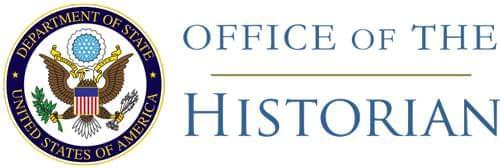352. Telegram From the Embassy in Laos to the Department of State1
1357. Reference: Embassy telegram 13342 and Department telegram 1050.3 Following is … summary Royal Government relations with tribal groups.
- 1.
-
Groups other than Meo: Relations somewhat improved past year principally through joint efforts Lao Information Service, SP and USIS to promote more awareness and appreciation RG program and policies in national community. Probably strongest contribution to better relations was rice crop October–November 1955 in famine areas occupied largely by minorities (Kha, Phy Noio, Meo and others).
In general however RG has not undertaken sufficiently imaginative and concrete program to alleviate problems these areas, and has lacked vigor in promoting better relations. Particularly in certain areas infiltrated by Communist elements, government representatives [Page 761] reportedly seldom if ever visit with result that [garble, Communists?], who did at one time provide attentions, appear have won support by default. Worst situation is with Kha in central and southern Laos, where PL/VM have made biggest inroads both propaganda and subversive. RG policy varies according interest and abilities various governors, most of whom look down on tribes as inferior.
RG has made some strides re security through police and auto-defense programs, but situation calls for positive steps such as vigorous community development type program to promote better living conditions. One proposed solution is set up bureau, or government representative in charge minorities interests, to receive petitions and requests for aid and initiate concrete activities. Problem however is also political in that these groups require some form representation in assembly and government offices.
Multiple factors underlie RG’s limited success with minorities. These include (a) relatively loose integration of national community which is attempting transcend regional differences stemming from past political division into small kingdoms and difficulty access remote area, (b) Lao cultural superiority (assumed or otherwise entertained) over tribal groups, (c) RG’s manifest failure appreciate political importance these groups, and latter’s relative non-representation at levels above Tasseng, (d) underdeveloped RG bureaucracy lacking trained persons to undertake some of needed programs. To certain extent also, disruptive activities of PL/VM have served to create foci of opposition by effectively exploiting minority grievances and aspirations. In some areas such as central and southern Laos these activities have been able partially neutralize even the few measures RG has instituted.
- 2.
- Meo relations: Meo are spread through all northern provinces. Comments below however chiefly concern Meo attitudes in Xieng Khouang province, since majority live there, leadership is located there and their representative in National Assembly represents that province.
The Xieng Khouang Meo and the government at Vientiane view each other with mutual caution. Internal activities of unusually aggressive Meo minority (as well as the Phouteng) have not always been in line with national interests. Meo, who with Phouteng comprise 75 percent of Xieng Khouang population, have had impressive record as guerrillas which has tended to make RG uneasy. Discontinuance of French support for local guerrilla forces after Geneva was followed by RG refusal support these groups for fear of Peiping create private army. This in turn increased uneasiness of Xieng Khouang Meo. Recent strong RG support for auto-defense activities has however considerably reduced this feeling.
[Page 762]Governor of Xieng Khouang province, while a Lao, asserts Vientiane officials too seldom visit Xieng Khouang and thus do not understand problems. On other hand Lao and Meo officials in Xieng Khouang do not sufficiently promote their interest at Vientiane, Governor and his colleagues recoiling from politicking and currying favor in the stale political circles of the capital; feel there should be no need for this when one presents government with sensible program consistent with national aims.
Xieng Khouang has always maintained independent feeling of apartness. Prewar Meo oriented their thriving export business toward Tonkin rather than Mekong. Xieng Khouang moreover was independent principality before French came, and at one time during its period of autonomy invaded Luang Prabang and held it for some time.
Will pouch fuller report.4
- Source: Department of State, Central Files, 751J.00/4–2455. Secret.↩
- In telegram 1334, April 19, the Embassy briefly reported on progress made in specific USOM/Laos programs and stated that it would report on tribal minority relations separately. (Ibid., 751J.5–MSP/4–1956)↩
- In telegram 1050, April 6, the Department requested a report on the status of Lao Government relations with tribal minorities in connection with NSC Action No. 1290–d review in Washington. (Ibid., 751J.00/4–656)↩
- Not found in Department of State files.↩
